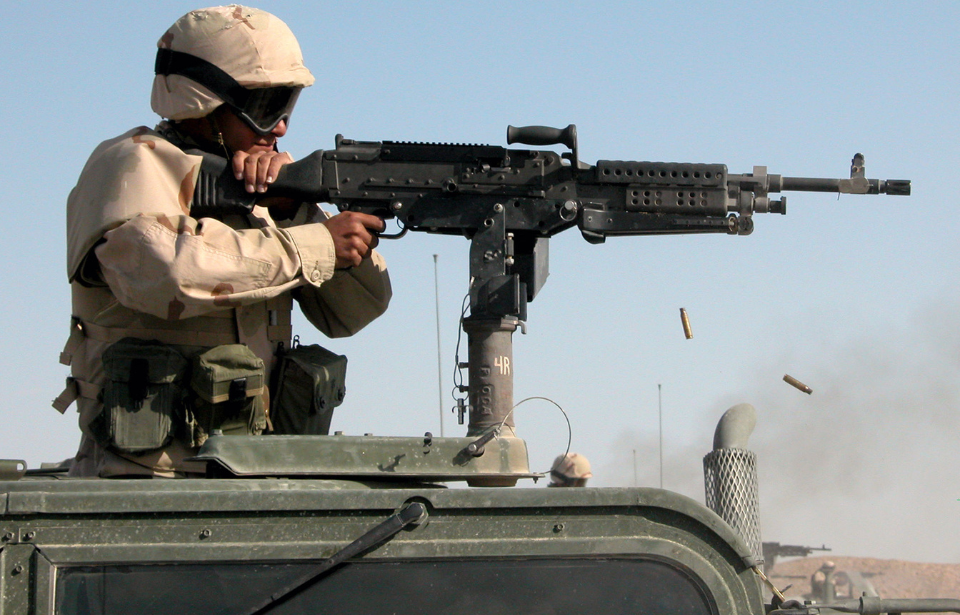In 1884, the Maxim gun was created, forever changing warfare. Over the subsequent 100 years, the idea of the machine gun was continuously improved. Some became lighter, so they could be more easily carried by soldiers, while others stayed on the ground or attached to vehicles, allowing them to deliver more intense fire. This was the case for the M240, which is still equipped by the United States and many other NATO member countries.
Design and development of the M240
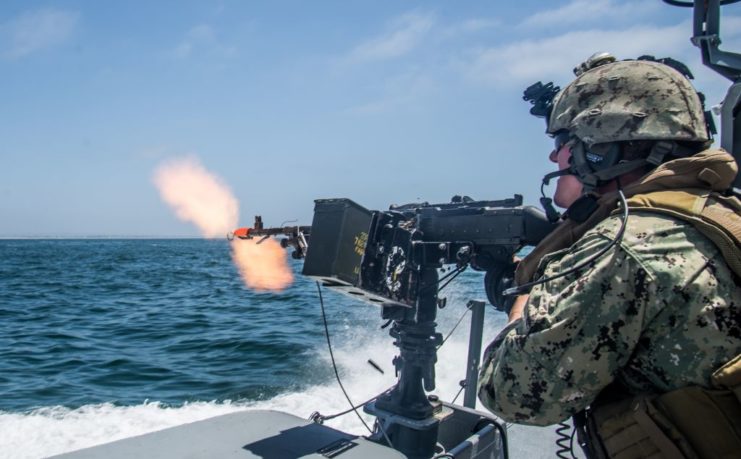
The M240 was designed by Fabrique Nationale (FN) Herstal, a Belgian arms company. The US Army first adopted the machine gun in 1977, for use on the branch’s tanks. Over time, it and the US Marine Corps found more uses for the versatile weapon.
The M240 is a belt-fed, gas-operated medium machine gun that fires the standard 7.62 x 51 mm NATO round. Its rate of fire can by controlled through three different settings. The first allows the weapon to fire between 650-750 rounds per minute, while the second allows for it to cycle at 750-850. The final one increases this total even more, allowing for between 850 and 950 rounds.
The US military aimed for the M240 to replace the M73 and its later variant, the M219. The three were tested in two categories: mean rounds before stoppage and mean rounds before failure. The M240 was the clear winner and was subsequently adopted by the Army.
Adopted by branches of the US military
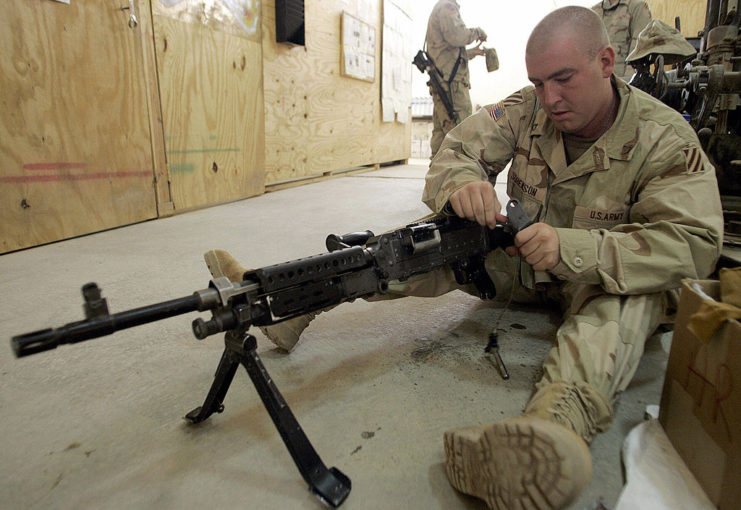
While the Army and the Marine Corps use the M240, they do so differently. The Army operates the gun via an M192 Lightweight Ground Mount tripod. The device, which was first introduced in 2005, allows users to easily make adjustments while in the field. The unit is also known for being lightweight and easier for soldiers to transport.
The Marines use an updated version of the legendary M2 tripod. This newer model, called the M122A1, allows those in the field to use the device with one hand. It’s also compatible with a number of different machine guns, without the need for an adaptor.
Use of the M240 in battle
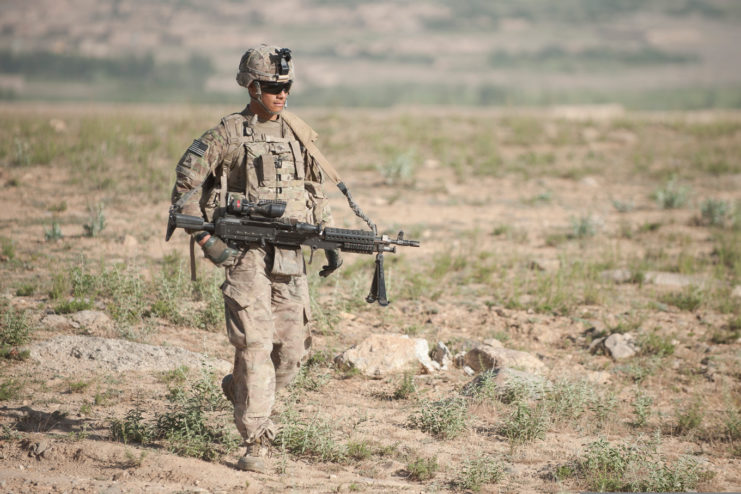
The M240 has been used by American soldiers in a number of different conflicts. The first was during the Gulf War. The weapon was also carried by infantrymen during the wars in Afghanistan and Iraq. Iraqi forces used the machine gun to fight against ISIL and ISIS.
The M240 has been carried by members of the Free Syrian Army throughout the Syrian Civil War. Units have been fitted onto technicals, which are improvised military vehicles created by fitting standard pick-up trucks or similar automobiles with military weapons, such as machine guns, anti-aircraft guns or a recoilless rifle.
Many other nations have equipped the M240

A number of other nations also use the M240. The Indonesian Army equipped the machine gun on its Leopard 2s, while Poland uses the weapon on its fleet of M1A2 Abrams. The Spanish Army Airmobile Force affixes the M240 to its Chinook helicopters. In 2017, the nation of Georgia began using M240s, rather than Russian-made guns, while in 2021, the Joint United States Military Assistance Group provided models to the Philippines.
The Americans and NATO have also provided M240s to armies looking to protect themselves. The Iraqis were given them to aid in their fight against groups like the Taliban, and Ukraine has been provided with an undisclosed number to fight against the ongoing Russian invasion.
There are a number of variants
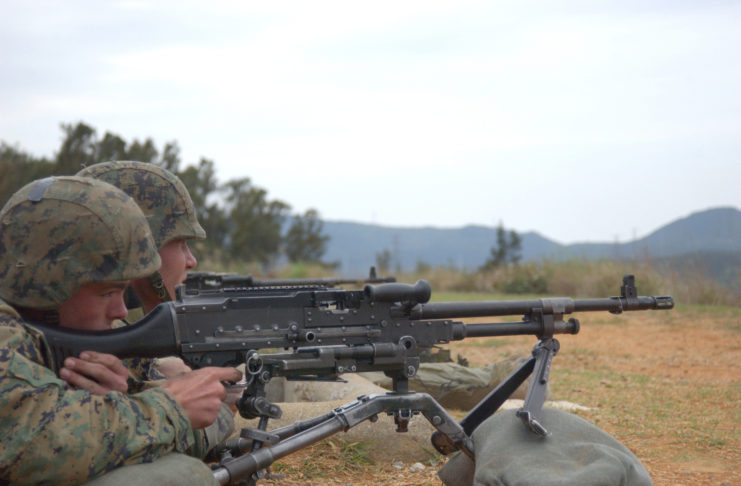
Since its debut, there have been many versions of the M240 developed. The M240E1 is used by the Marines to mount on the likes of the LAV-25, and the service also uses the M240B as its standard medium-sized infantry machine gun. The “B” variant is also used by the US Coast Guard.
The M240L can be more easily carried. Rather than being built from steel, it’s produced from titanium, making it 18 percent lighter than the standard model. The only drawback is that it takes longer to produce and has to have extra protections added to defend against the weather.
More from us: The XM204 Top Attack Munition Could Replace Landmines on the Battlefield
There’s also the Barrett 240LW machine gun, made using the M240’s specifications, but aimed toward making it significantly lighter. Arms maker Barrett was able to reduce the weight through the use of different materials and through more efficiently manufacturing the gun. A shortened version, the Barrett 240LWS, was also developed.
